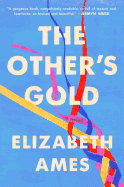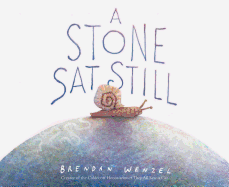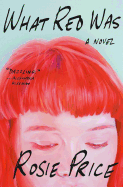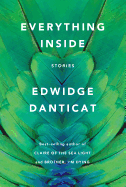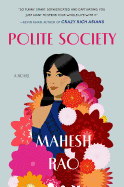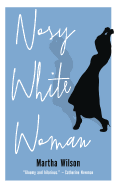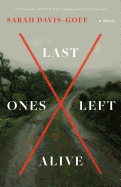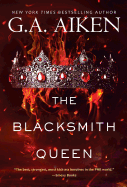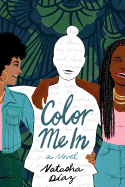Friday, August 30, 2019
The half-century anniversary of the 1969 Stonewall riots this year drew much fanfare to the significance of that historical moment. It's undeniably encouraging to see the strides made since and, perhaps counterintuitively, continues to pique my curiosity for what came beforehand.
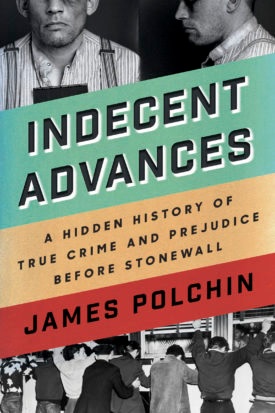 One book I have found indispensable this summer has been Indecent Advances: A Hidden History of True Crime and Prejudice Before Stonewall (Counterpoint, $26) by James Polchin. Extrapolating from news clippings from the early 20th century, Polchin reads between the lines of reportage, teasing out the homosexual implications of certain stories of violent crime. In many of these cases, two unrelated men check into a hotel, but only one checks out. Perhaps more chilling is the way each defendant leans into "gay panic" as motivation--fearful self-defense when faced with "improper advances." Polchin shows how lawyers and newspapers approached these trials with overt and lurid bias, implicating victims in their own deaths. As a result, such defense strategies became viable, and gay men became easy targets for more violence.
One book I have found indispensable this summer has been Indecent Advances: A Hidden History of True Crime and Prejudice Before Stonewall (Counterpoint, $26) by James Polchin. Extrapolating from news clippings from the early 20th century, Polchin reads between the lines of reportage, teasing out the homosexual implications of certain stories of violent crime. In many of these cases, two unrelated men check into a hotel, but only one checks out. Perhaps more chilling is the way each defendant leans into "gay panic" as motivation--fearful self-defense when faced with "improper advances." Polchin shows how lawyers and newspapers approached these trials with overt and lurid bias, implicating victims in their own deaths. As a result, such defense strategies became viable, and gay men became easy targets for more violence.
 Further illumination of this time period is found in Troublemaker for Justice ($13.95) by Jacqueline Houtman, Walter Naegle and Michael G. Long. It's a slim biography of Bayard Rustin, who inspired Dr. Martin Luther King Jr. toward nonviolent resistance during the civil rights era. The first YA book from San Francisco publisher City Lights, Troublemaker is an excellent introduction to the gay black Quaker called "Mr. March-on-Washington himself" by friends and undercut by opponents for his sexual orientation. When South Carolina Senator Strom Thurmond sought to derail the March, he targeted Rustin as a pervert. Philip Randolph, though, defended his friend and co-activist with a declaration of utter confidence in Rustin's "character, integrity, and extraordinary ability."
Further illumination of this time period is found in Troublemaker for Justice ($13.95) by Jacqueline Houtman, Walter Naegle and Michael G. Long. It's a slim biography of Bayard Rustin, who inspired Dr. Martin Luther King Jr. toward nonviolent resistance during the civil rights era. The first YA book from San Francisco publisher City Lights, Troublemaker is an excellent introduction to the gay black Quaker called "Mr. March-on-Washington himself" by friends and undercut by opponents for his sexual orientation. When South Carolina Senator Strom Thurmond sought to derail the March, he targeted Rustin as a pervert. Philip Randolph, though, defended his friend and co-activist with a declaration of utter confidence in Rustin's "character, integrity, and extraordinary ability."
The history of social (in)justice runs deep, and these two books are tremendous additions to that legacy. --Dave Wheeler, associate editor, Shelf Awareness
The Other's Gold
by Elizabeth Ames
After a friend's darkest secret is revealed, can that friendship survive the revelation? This is the question that faces the characters and challenges the readers of Elizabeth Ames's first novel, The Other's Gold.
After meeting in college, four roommates are linked in a relationship that goes deeper than sisterhood, carrying them through school and into their adult lives. Margaret, whose beauty offers a new definition of brilliance, becomes wealthy through marriage and writes tips for gracious living on a popular blog. Alice, haunted by an act of childhood violence, marries a fellow medical student and pursues an elusive goal of fertility while meeting the demands of being a doctor. Lainey, a passionate activist who achieves fame during Occupy Wall Street, balances her political life with being an ideal mother. Ji Sun, after an act of betrayal, is supported by her family's fortune and tormented by her attraction to Lainey's husband. And yet, while enmeshed in lives that could easily separate them, these women maintain and are nourished by their closeness, even after discovering secrets that threaten to destroy that bond.
Ames takes the familiar story of female friendship into a realm of candor and respect that enters new narrative ground. Her eye for detail is as sharp as Mary McCarthy's in The Group, but without McCarthy's satirical cruelty. Exploring the sensual, visceral and horror-filled experiences of being female while never abandoning the love Ames has for her characters, The Other's Gold is smart and provocative, satisfying and unforgettable. --Janet Brown, author and former bookseller
Discover: Elizabeth Ames brings a bright, sharp lens to a story of friendship among women that will keep readers up long past their bedtime.
What Red Was
by Rosie Price
After 22-year-old Kate Quaile is raped by someone she knows at a party at the London home of her friend Max Rippon's family, she procures a morning-after pill but is unable to do much else. She watches the deadline for her application to a master's program in filmmaking come and go. She begins to drink more and filches her roommate's prescription pills, and she has self-destructive impulses that include pouring boiling water onto her hand. Kate vows to tell no one about the rape because "the horror of being disbelieved was worse than the horror of bearing it alone."
This movie-of-the-week-style recap fails to convey the originality of What Red Was, the debut novel from Rosie Price, who is wise beyond her 26 years when it comes to comprehending the experience of trauma and its fraught aftermath.
Kate finds herself taking tentative steps toward a new romance and seeking comfort from Max's mother, a celebrated film director who also knows Kate's attacker. Says Kate's new boyfriend about her relationship with the Rippon family, "They treat you like one of their own." Yes, but is that necessarily a good thing?
What Red Was is about both dealing with pain and the limitations of even the most well-meaning person's efforts on behalf of the sufferer. Although the book's impetuously roving point of view is disorienting and prevents readers from fully knowing Kate, they will nevertheless leave the novel understanding more than they did--about loyalty, about survival--before they cracked its cover. --Nell Beram, author and freelance writer
Discover: In this considered debut novel, a young woman's attempt to recover from a rape is complicated by the fact that she knows her attacker.
Everything Inside: Stories
by Edwidge Danticat
Haitian American author Edwidge Danticat (The Art of Death, Claire of the Sea Light) opens up the complexity of immigrant lives in her finely tuned and penetrating story collection Everything Inside.
The eight stories consider emigration from Haiti and immigration to the United States. The emotional tenor that binds them is one of estrangement, of immigrants torn between the old country and the new, between the promise of a new life and the reality of America. These stories also focus on family and how immigration affects subsequent generations, examining the distance between first-generation immigrants and their children. Though the characters in each story are different and not linked, Danticat follows similar themes, unearthing common experiences and crafting a mosaic of hope, regret and perseverance. The title is apt, referring to all that these characters carry inside them as they migrate from one life to the next.
"This country makes you do bad things," the narrator's immigrant friend says about the U.S. in "Dosas," the first story of the collection. "In the Old Days" features a young narrator, the daughter of immigrants, meeting her father for the first time, a man who returned to Haiti after the dictatorship fell. It explores how marriages are affected by the split loyalties of diaspora, with some choosing to stay in the new country and others feeling obligated to return.
Everything Inside thrums with humanity. Danticat is a master of mood and subtlety. As quiet and understated as these stories are, the reader will come away with a deeper, richer view of immigrant communities. --Scott Neuffer, writer, poet, editor of trampset
Discover: Acclaimed author Edwidge Danticat delivers a moving story collection about Haitian American immigrants.
Polite Society
by Mahesh Rao
Upward mobility through marriage is the prevailing theme in Polite Society by Mahesh Rao. The heroine, Ania Khurana, and her story are inspired by Jane Austen's Emma, and Polite Society pays suitable homage to Emma Woodhouse. It also takes off in a flamboyant new direction with lavish parties, dazzling homes and characters one might find in a Bollywood movie.
Ania lives with her widowed father and her aging aunt Renu on Delhi's most prestigious street. The Khuranas sit atop the city's wealthiest class, blessed with every luxury imaginable, but Ania is bored, lonely and searching for meaning in her life. She catches the matchmaking bug after introducing Renu to a distinguished colonel who rescues her from spinsterhood. It seems only logical that she should also look for a husband for her "poor" friend Dimple. So preoccupied is she with sharpening her matchmaking skills that she neglects to consider what Dimple might want for herself. It takes the arrival of the colonel's handsome nephew from New York for Ania to realize that she is no love expert after all.
Kenyan-born Rao (The Smoke Is Rising), who lives in the U.K., traveled to India to research and write Polite Society. In Delhi, he immersed himself in social gatherings where he mingled with gossipy society matrons and others on the highest rung of the social ladder, cultivating the cunning observations and clever humor that would launch his American debut. Under the surface glamour of Polite Society lies a compelling story about the universal need to love and be loved, and the emotional fallibility of even the most outwardly successful people. --Shahina Piyarali, writer and reviewer
Discover: A social comedy featuring a wealthy young woman in Delhi who takes it upon herself to find an eligible husband for her middle-class friend.
Nosy White Woman
by Martha Wilson
Martha Wilson, a U.S. expat who has lived in Canada for more than two decades, adroitly balances characters from both sides of the shared border (and beyond) throughout her exceptional debut of 16 short stories, Nosy White Woman. While first collections might often prove uneven, Wilson achieves a rare laudable consistency throughout.
Standouts, of course, are many. In the titular "Nosy White Woman," Wilson subtly, skillfully transforms a Thanksgiving family meal into a daughter's racially charged warning to her septuagenarian mother, who's about to make her annual Canada-to-Florida snowbird journey. By invoking the tragedies of Tamir Rice, Philando Castile, Eric Garner and Sandra Bland, the daughter adeptly warns her mother about the potentially fatal consequences of engaging police as a concerned (white) citizen. Wilson ingeniously examines the impermanence of humanity in "My," as an elderly man's existence gets erased when the last person with any memories of him eventually passes away. In "Binoculars," a woman whose property was the site of a devastating auto accident helps the victim's mother shepherd her daughter's spirit to her final resting place--with extra protection. "Near Hickory" is about a teenager working as a summer au pair who learns about the casual, careless privileges of wealth. And in "Midway," a woman who's always worked in her family's small-town fruitcake business experiences the rest of the world through her insatiable consumption of international news.
While her settings might feel commonplace--kitchen-table dramas, extended holiday gatherings, generational disconnects, neighborly interactions--Wilson adds an extra quirk, an unexpected fleeting detail, a sudden revelation that ensures a satisfyingly lingering resonance with each and every story. --Terry Hong, Smithsonian BookDragon
Discover: Martha Wilson's exemplary debut collection transforms everyday experiences into moments of surprising, unexpected awareness.
Last Ones Left Alive
by Sarah Davis-Goff
Sarah Davis-Goff's view of dystopian Ireland is vividly displayed through fierce adolescent protagonist Orpen. As Last Ones Left Alive begins, Orpen is boldly pushing toward potential salvation. She's alone save for her dog and her birth mother's partner, Maeve, bound and ambiguously lifeless in a wheelbarrow.
The narrative compellingly alternates between Orpen's perilous quest and what necessitated it. Portentous flashbacks paint solitary yet idyllic beginnings on an abandoned island with her mothers Mam and Maeve, where the state of the world was a mystery and death seemed far away. The existence of the zombie-like skrake, "real enough to kill you dead," is also tantalizingly revealed.
Orpen's childhood ends abruptly at seven when she's given a set of knives and a punishing training regimen under Maeve's tutelage. When disaster strikes, Orpen takes her warrior ways on the road, trying to find a mysterious city mentioned by her mothers. Warned not to trust others, Orpen fights a longing for people, one thing she has in common with skrake, and an encounter with other survivors hurls her plans along an even more dangerous path.
In her debut novel, Irish author Davis-Goff, co-founder of Tramp Press, writes Orpen's apocalyptic world in a compelling cadence and shines at the bleak details--a road is "barely a path, a rough line, like a finger drawn across dry dirt." Her fight scenes hit the sweet spot and help highlight the natural feminist bent of the work. Despite the grim surroundings, there is beauty in Orpen's world, where she was taught to survive, but also how to live. --Lauren O'Brien of Malcolm Avenue Review
Discover: A strong young girl forges across dystopian Ireland with her half-dead mother, battling zombie-like killers on the way to a city she hopes exists.
Science Fiction & Fantasy
The Blacksmith Queen
by G.A. Aiken
G.A. Aiken, a pseudonym of writer Shelly Laurenston, launches the Scarred Earth fantasy series with The Blacksmith Queen. In the land of the Black Hills, the death of the Old King sets off a flurry of assassinations by his heirs. Each of his sons wants to be crowned king, and when the dust settles, there are five survivors, each with an army. For blacksmith Keely Smythe, war between royals means a growing need for weaponry, and she happily embraces the boom in business. But her blacksmithing abruptly stops when a prophecy declares her younger sister shall become the new queen.
Keely has to leave her beloved forge to guard her sister on the journey to meet the witch seer who will proclaim her worthy of the throne. What Keely doesn't know is that she's walking into a trap. When the seer shocks everyone by naming both Keely and her sister as future queens, Keely faces horrific betrayal by someone she believed she could trust. Guarded by centaurs, demon wolves and a War Monk, Keely travels to the Badlands, where she must find a way to enlist gnomes, barbarians, elves and perhaps dragons in her cause. For if she and Caid, the warrior centaur who befriends her, cannot stop Keely's sociopathic, would-be-queen sister, no one in their world will be safe.
A skilled, fast-paced plot, indomitable characters and a cause to care deeply about will make readers eager for the second installment. --Lois Faye Dyer, writer and reviewer
Discover: When a blacksmith is named queen of her country, she gathers a motley crew of warrior friends and sets off to save the world from greedy pretenders to the throne.
Romance
How to Cross a Marquess
by Jane Ashford
This latest installment in Jane Ashford's delightful series The Way to a Lord's Heart will most assuredly send readers searching for the earlier books, although the story easily stands on its own. Roger Berwick, Marquess of Chatton, grew up at Chatton Castle in Northumberland, which shares a border with the property of Miss Fenella Fairclough's family. When she was 17 and he a few years older, their fathers made ham-handed efforts to force a match, but Fenella spiked their plotting by fleeing north to her Scottish grandmother's home. Five years later, Fenella has returned to care for her ailing father, and Roger is a widower. Both have matured and are ready to move forward from past differences, although the occasional outbreak of earlier antagonism seems unavoidable. Nevertheless, the two slowly leave past grievances behind and seem to be making strides toward a deeper relationship.
When Fenella's father dies, she must deal with the unwelcome oversight of her two extremely obnoxious brothers-in-law, who set to arranging her life without asking about what she wants. She turns to Roger as a confidant. And much to her surprise, he has a scheme that will solve all her problems, skewer her encroaching relatives and set her free. If she accepts Roger's resolution, however, can she ever be assured of his true feelings for her?
The novel smoothly shifts the enemies to lovers in a well-crafted plot with a vivid Regency setting. An intriguing mystery element also adds to the story's appeal. Fans of strong, romantic characters and entertaining dialogue are certain to enjoy this latest from Ashford. --Lois Faye Dyer, writer and reviewer
Discover: An English miss and a marquess find romance and thwart their enemies on the Scottish border in this Regency romance.
Biography & Memoir
Even if Your Heart Would Listen: Losing My Daughter to Heroin
by Elise Schiller
"Does any parent accept a child's death before the fact?" This heartbreaking question is one of many that Elise Schiller asks in her raw and powerfully candid memoir of her daughter Giana's life before and after becoming addicted to opioids.
Even if Your Heart Would Listen opens on January 21, 1980, the day of Giana's birth. One page and almost exactly 34 years later, Schiller learns of Giana's fatal heroin overdose, despite being a patient in a Colorado treatment center. Drawing upon Giana's journals and medical records, and at times pivoting the narrative to address questions to her daughter, Schiller provides readers with a full portrait of Giana: an accomplished swimmer, a dedicated veterinary technician and someone who sought help from five residential and outpatient centers, all of which ultimately failed her and her family.
Schiller's grief and pain is potent on the page, as is her anger and frustration with an inadequate, one-size-fits-all, expensive system of care grounded in self-help and "the legacy of Alcoholics Anonymous" rather than the proven efficacy of medication-assisted treatment. The substance abuse treatment industry still sees addiction as "a moral failing that causes one to have character defects--a huge contradiction that leaves patients and their families confused about what is wrong, causing them to ask: Is it a disease or just a matter of will? How can recovering from a disease be a matter of will, cured by acknowledging one's powerlessness over it?"
Timely and moving, Even if Your Heart Will Listen will resonate with anyone struggling to understand and cope with losing a loved one, especially an adult child, to addiction. --Melissa Firman, writer at melissafirman.com
Discover: A mother's powerful memoir of her daughter's heroin addiction and their family's experience with a deeply flawed system of care.
Sports
Shula: The Coach of the NFL's Greatest Generation
by Mark Ribowsky
When Don Shula was in junior high school, his hardworking Hungarian-immigrant parents refused to let him play football after he tore his nose open in a game. Undeterred, Shula forged his parents' signatures on the permission slip, and kept playing. The determined 11-year-old didn't become the priest his family hoped he would, but not even he imagined playing and achieving Hall of Fame status as a coach in the National Football League.
Mark Ribowsky, biographer of sports and music personalities (Dreams to Remember), details the "lantern-jawed" stalwart's five decades of football in Shula: The Coach of the NFL's Greatest Generation. Shula's career had more than adequate peaks to overshadow the valleys, but Ribowsky does not gloss over the "failures" that provided grist for the success mill and forged Shula's process of gritty, old-school discipline and grinding. An undefeated season coaching the Baltimore Colts went famously sideways in Super Bowl III, when the heavily favored Colts fell prey to Broadway Joe Namath's outlandish guarantee that his Jets team would win.
After losing another championship coaching the Miami Dolphins in 1972, Shula finally got a Super Bowl ring, and an as-yet-unmatched perfect season, in 1973. Ribowsky provides superb particulars about that game (and many others), including Shula's wife cold-cocking a rude fan and his watch being stolen off his wrist as his players hoisted him in victory. Comprehensive and straight-shooting about Shula's persona and career, touching on cultural influences of race, drugs and politics, Shula is a treasure trove of insight on one of the game's greats. --Lauren O'Brien of Malcolm Avenue Review
Discover: The family, teammates, coaches and management that influenced the life and career of NFL great Don Shula are detailed by acclaimed biographer Ribowsky.
Children's & Young Adult
A Stone Sat Still
by Brendan Wenzel
Where most people see the ordinary, Caldecott Honoree Brendan Wenzel (They All Saw a Cat; Hello Hello) uncovers the extraordinary. With its soothing, poetic rhythm, A Stone Sat Still shows young audiences the many facets of what appears to be an average, boring stone.
Where a squirrel sees a dark stone in the light of day, an owl sees a bright stone in the moonlight; when a slimy slug crawls over the rock, it feels rough, but to a prickly porcupine, it's smooth. Through different perspectives and all manner of nature's creatures, Wenzel illustrates how remarkable the stone is: "the stone was a feel/ and the stone was a smell.../ and the stone was a kitchen/ and the stone was a throne." Viewing through Wenzel's lens, readers experience the enormity of this simple rock in the natural world.
Accentuating the profound tale are captivating illustrations composed of cut paper, pencil, collage and oil pastels. The bold colors, strong textures and meticulous detail function like a powerful magnet, drawing the reader to each page in order to absorb every beautiful element. Whether a snail on land or a seal in the sea, Wenzel depicts the creatures in their natural habitats with a clear sense of respect and compassion. Finally, Wenzel reminds his audience of the urgent need for everyone to respect the planet. "A stone sat still/ with the water, grass, and dirt/ and it was as it was/ where it was in the world." But, as a double-page spread that shows nothing but ocean where there had once been land suggests, if we don't change our ways the stone may become a memory. A powerful kaleidoscope of nature, A Stone Sat Still is stunning. --Jen Forbus, freelancer
Discover: In this picture book companion to his Caldecott Honor-winning They All Saw a Cat, Brendan Wenzel proves a stone can be more than just a stone.
Color Me In
by Natasha Díaz
Nevaeh's parents have separated; while her father is at their home in White Plains, N.Y., she and her mom, Corinne, have moved into Corinne's family's brownstone in Harlem. Corinne's sister and Nevaeh's dad hate each other, so Nevaeh barely knows this side of her family. And since she has "the only thing close to light skin in [her] family" she feels like "an off-white blip amid a stunning array of deep chestnut and mahogany." While her proximity to whiteness helped her stay under the radar at her wealthy, mostly white schools, she now acutely feels the weight of being "white-passing."
As she deals with her mother's depression, her father's lack of empathy and a best friend who is hoping to go to school abroad, Nevaeh tries to find a space where her mother's Liberian and Jamaican roots make sense with her father's Jewish background. It's not until she experiences a frightening brush with potent racism that she recognizes she "was so wrapped up in believing that [she] was owed some official validation" that she "failed... to see the boundless influence at [her] fingertips."
Color Me In, Natasha Díaz's YA debut, borrows a lot from Díaz's own experience. In an author's note, Díaz points out her similarities with Nevaeh: "I am a multiracial woman who inadvertently passes as white... my heritage is Liberian and Brazilian as much as it is Jewish... and I have a wonderful, loud, blended, multicultural family." Through micro- and macroaggressions, personal stumbles, genuine sadness and a hard-won first romance, Nevaeh's struggles excellently reflect the teen experience and bring her to a place where she can think, "I am me, in all my ambiguous glory." --Siân Gaetano, children's and YA editor, Shelf Awareness
Discover: Natasha Díaz's debut YA novel features a young woman trying to find stability and calm in ambiguity.


